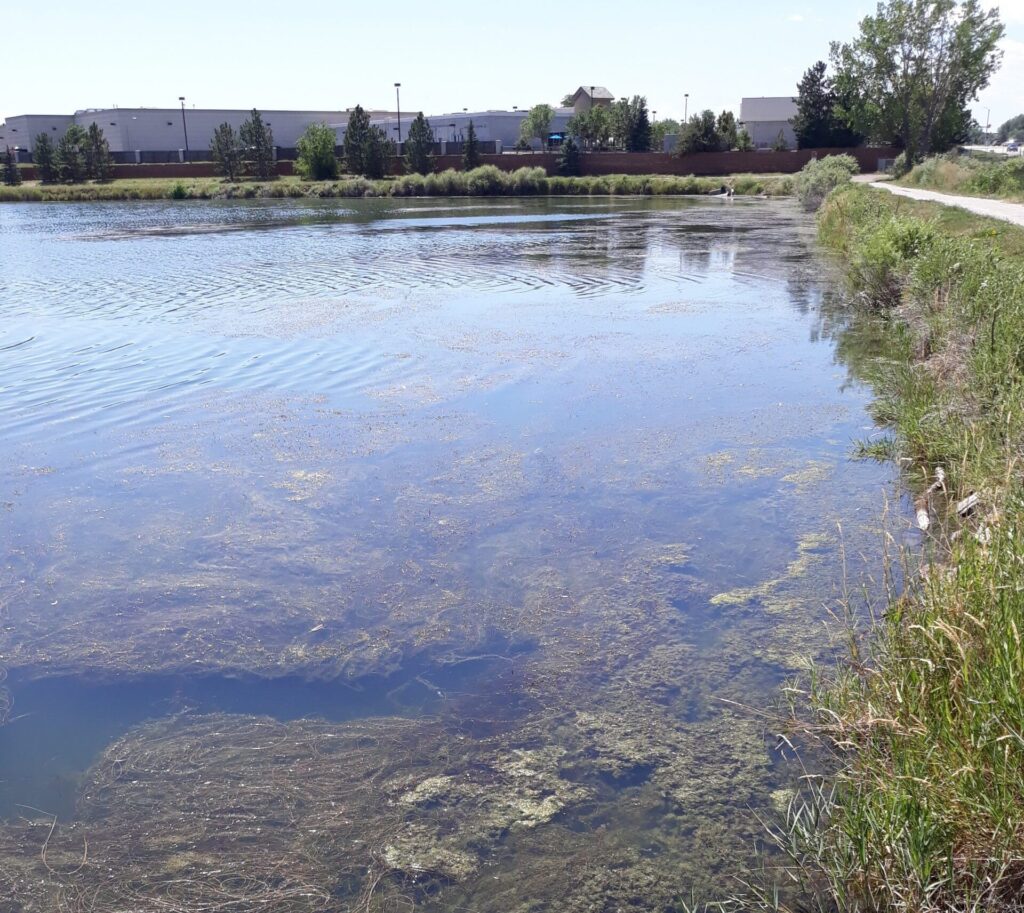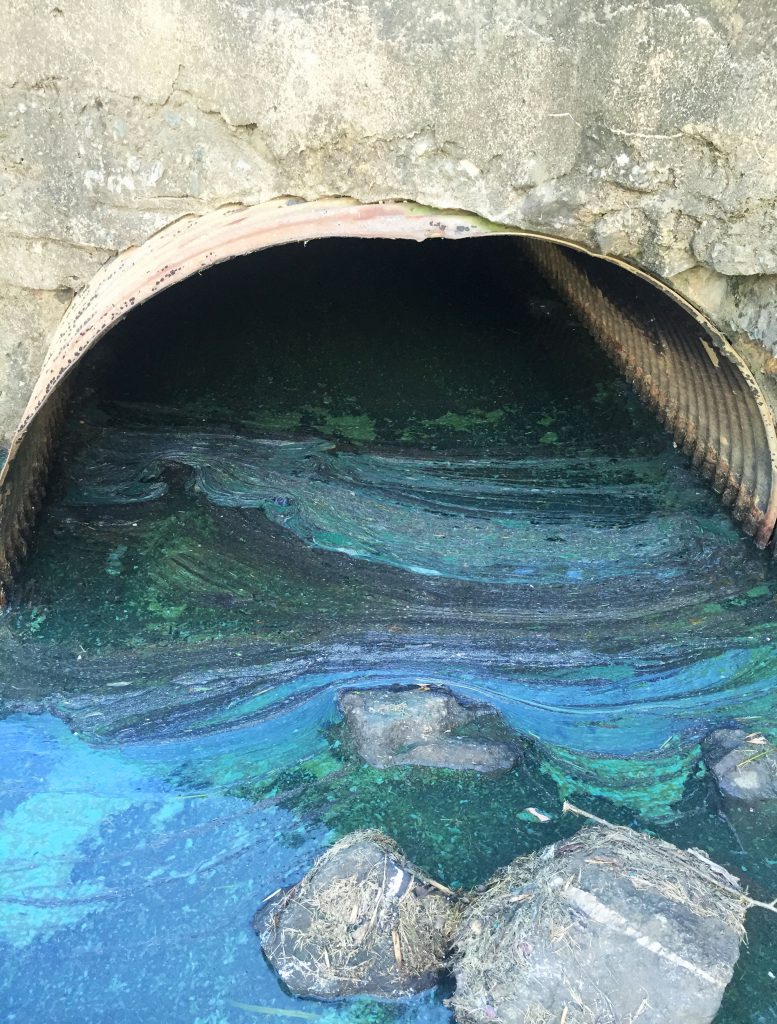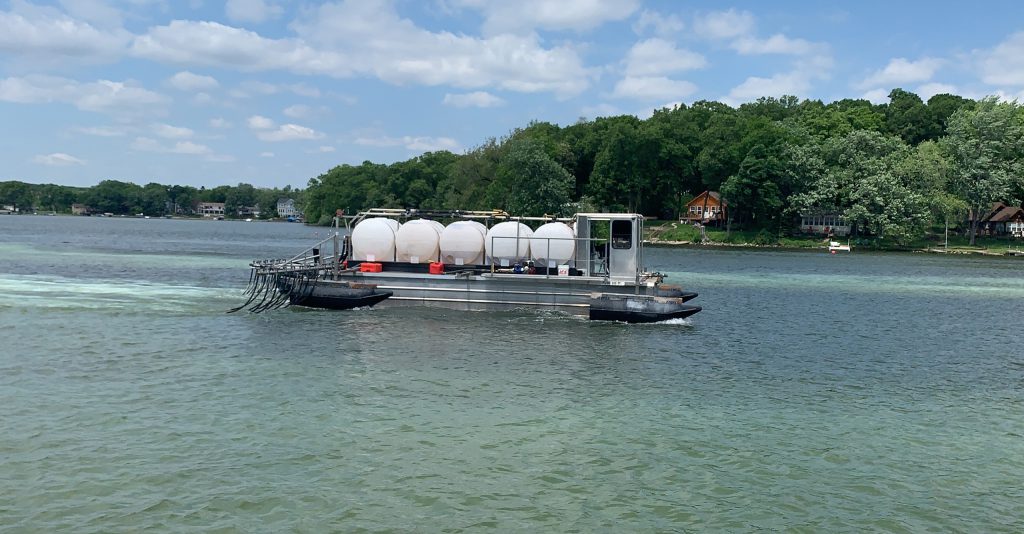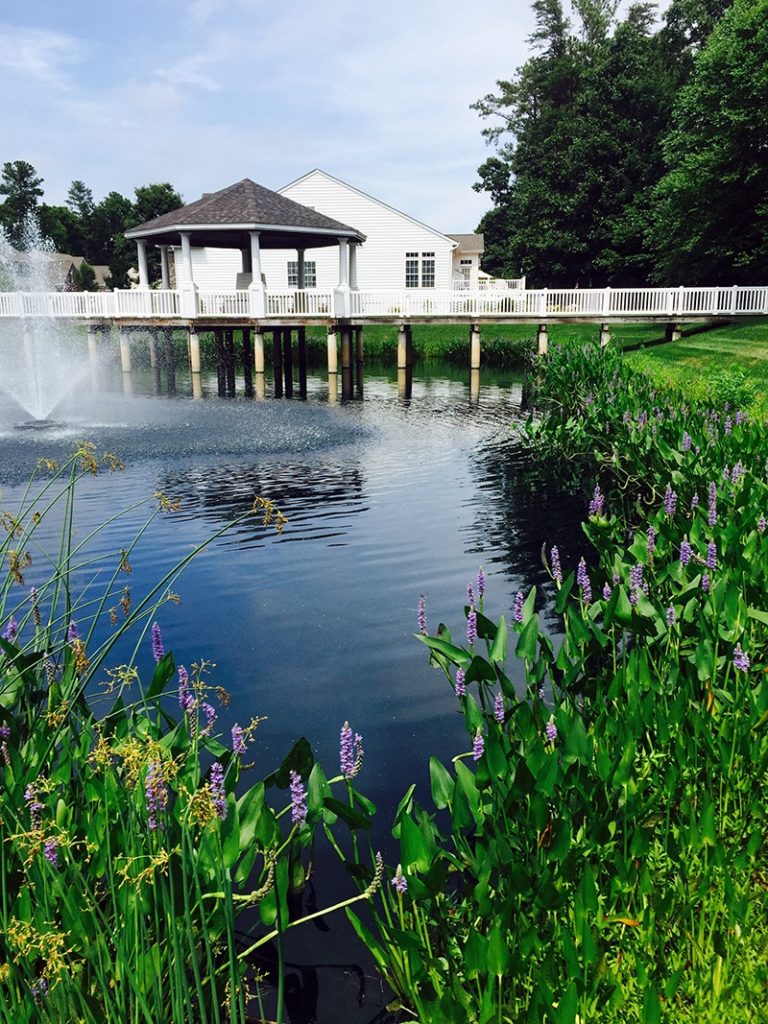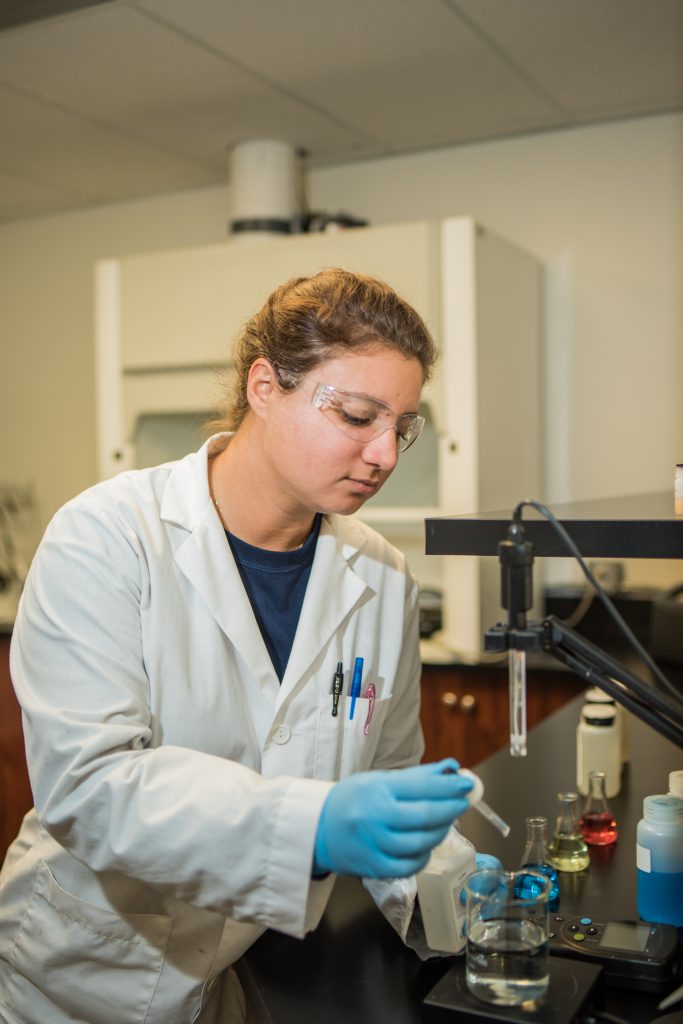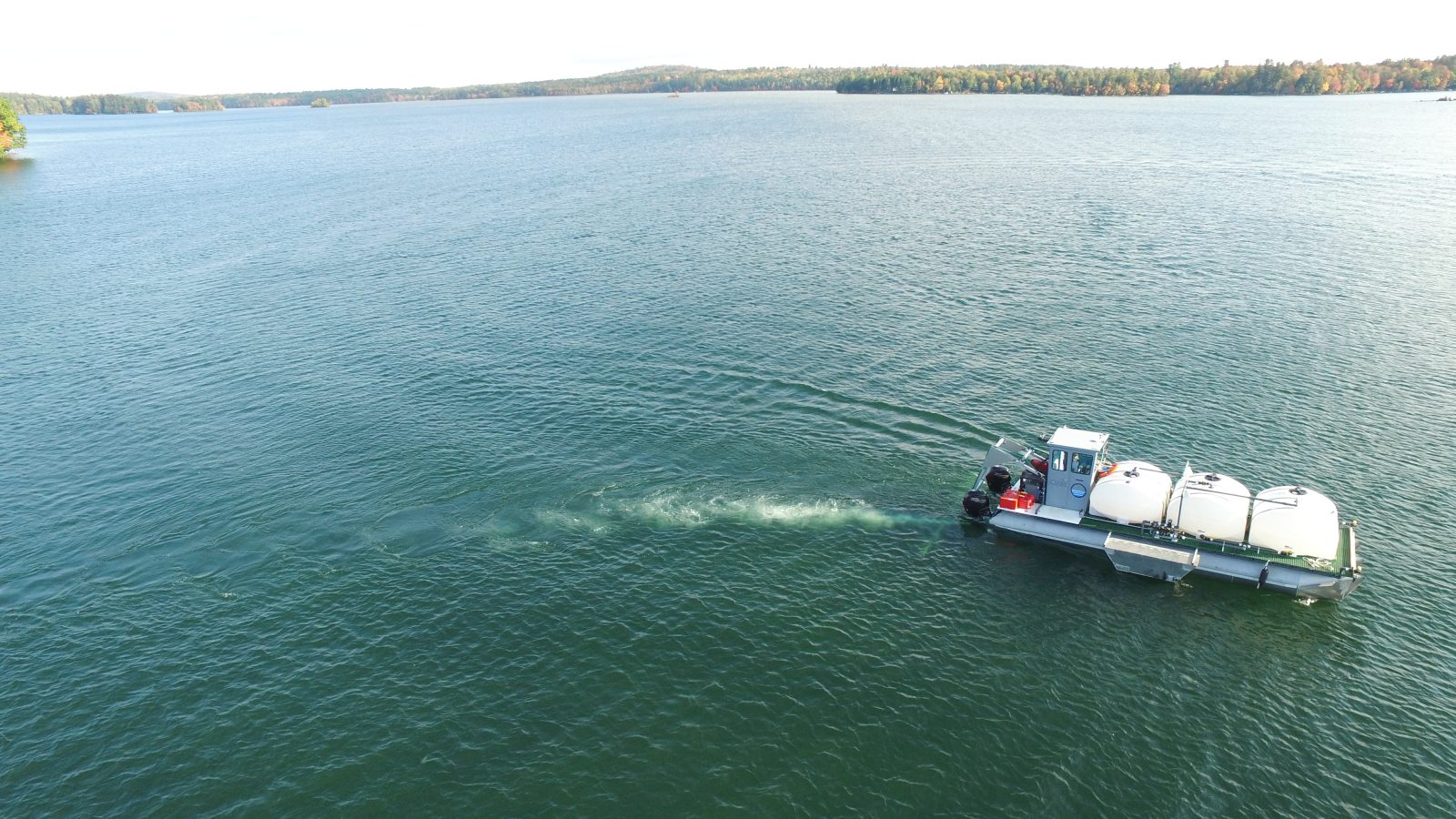
How to Improve Lake and Pond Water Quality through Nutrient Remediation
In lake, pond, and fisheries management, nutrients are critically important. Nutrients are responsible for sustaining all living plants and animals in an aquatic ecosystem. If properly managed, nutrients can help community managers, private landowners, parks and recreation directors, golf course superintendents, and fishing enthusiasts get the most out of their waterbody. However, without a responsible nutrient management plan in place, nutrient levels can become excessive, potentially fueling nuisance and invasive aquatic plant growth, degrading water quality, and even spurring the development of harmful algal blooms. To achieve the long-term goals for your waterbody while avoiding these problematic situations, it’s important to understand the benefits and complexities of nutrient management.
Restore Water Quality with Nutrient Remedation
How Does Nutrient Loading Occur?
Nutrients come in many forms, but the two most common nutrients found in water are phosphorus and nitrogen. These nutrients are found naturally in sediment and are released by decomposing plant matter throughout the year. At balanced levels, these nutrients help aquatic ecosystems thrive, but when introduced to a lake or pond from outside sources, they can surpass the desirable threshold. Excess nutrients most often enter a waterbody through stormwater runoff. As water travels across roadways, sidewalks, and other impervious surfaces during rainstorms, it picks up grass clippings, pet waste, and residue from fertilizers. These and other pollutants are then transported to our lakes, rivers, and stormwater ponds where they inadvertently become available to the entire food chain.
How Does Nutrient Loading Affect Water Quality?
Chronic nutrient loading can lead to a plethora of water quality problems that may accelerate a waterbody’s rate of aging and threaten the health of your community. Recurring algae blooms and invasive species infestations fueled by excess nutrients can cause thick mats to develop on the surface of a waterbody, preventing the exchange of oxygen. In turn, this can cause massive fish kills while destroying desirable plants and beneficial zooplankton. The resulting decomposition of these organic materials will add additional nitrogen and phosphorous to the waterbody, continuing the disastrous nutrient loading cycle. If the negative cycle continues, the waterbody can accumulate bottom muck and sediment, therefore losing significant depths and volume over time.
Scarier still is the possibility of harmful algal bloom development. Cyanobacteria (also known as blue-green algae) is known to produce dangerous toxins under the right conditions. Exposure to these toxins through swimming and recreation around a plagued waterbody may be connected to the development of neurodegenerative diseases such as ALS, Alzheimer’s, and Parkinson’s disease. Like other forms of algae, cyanobacteria is often fueled by the presence of excess nutrients in the water column.
Improving Water Quality with Alum
Thankfully, there are several ways to safely remove nutrients from your lake or stormwater pond. Alum is extremely effective at binding free radical nutrients, especially phosphorus, throughout the water column, creating a floc that sinks to the bottom of the waterbody and inactivates nutrient-rich sediment. As the floc quickly sinks to the bottom of the waterbody, water quality and clarity improve and steadily enhance over time. The settled floc provides millions of phosphorus-binding sites, blocking the release of phosphorus from the sediment.
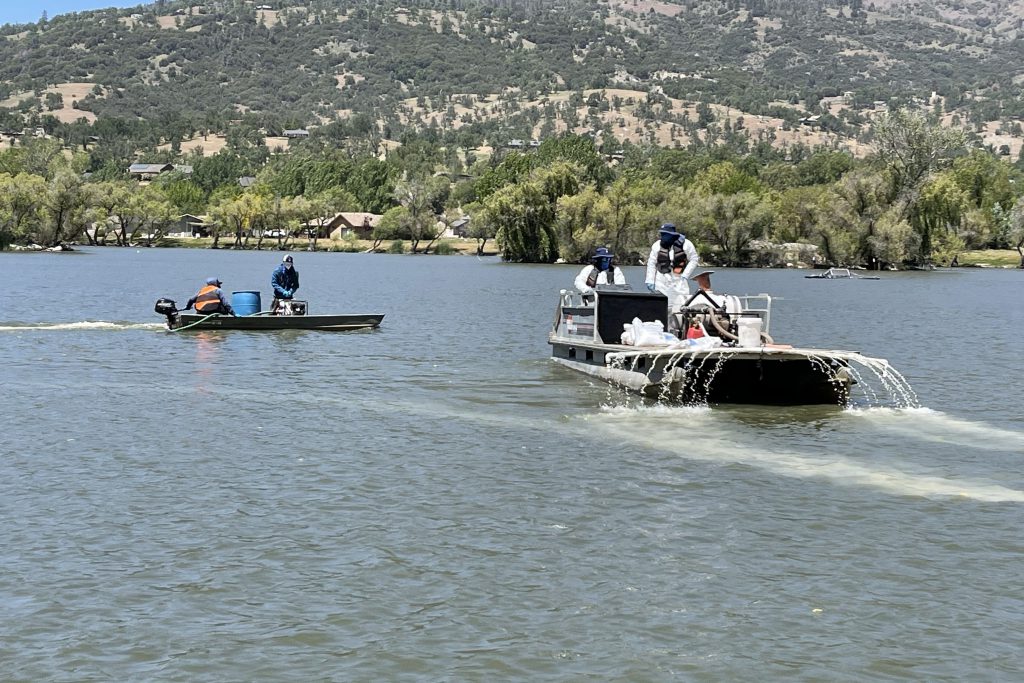
Reduce Phosphorus Levels with Phoslock
Another nutrient remediation product called Phoslock contains a unique lanthanum-modified clay with a high affinity to permanently bind and remove free reactive phosphorus from the water column.
Applications of Alum and Phoslock by a licensed professional can render phosphorus inactive and unable to transfer energy up the food chain. When water quality is more balanced, it becomes more difficult for algae and aquatic weeds to develop.
Restore Water Quality with TryMarine
TryMarine is a revolutionary solution that directly tackles bottom “muck” to revitalize lakes. Unlike nutrient remediation that binds excess nutrients, TryMarine boosts oxygen in the sediment, allowing the natural breakdown of organic material into usable nutrients that fuel the lake’s food web. This process restores water quality, improves sediment, enhances biodiversity, and effectively rejuvenates your lake.
Before & After TryMarine Applications
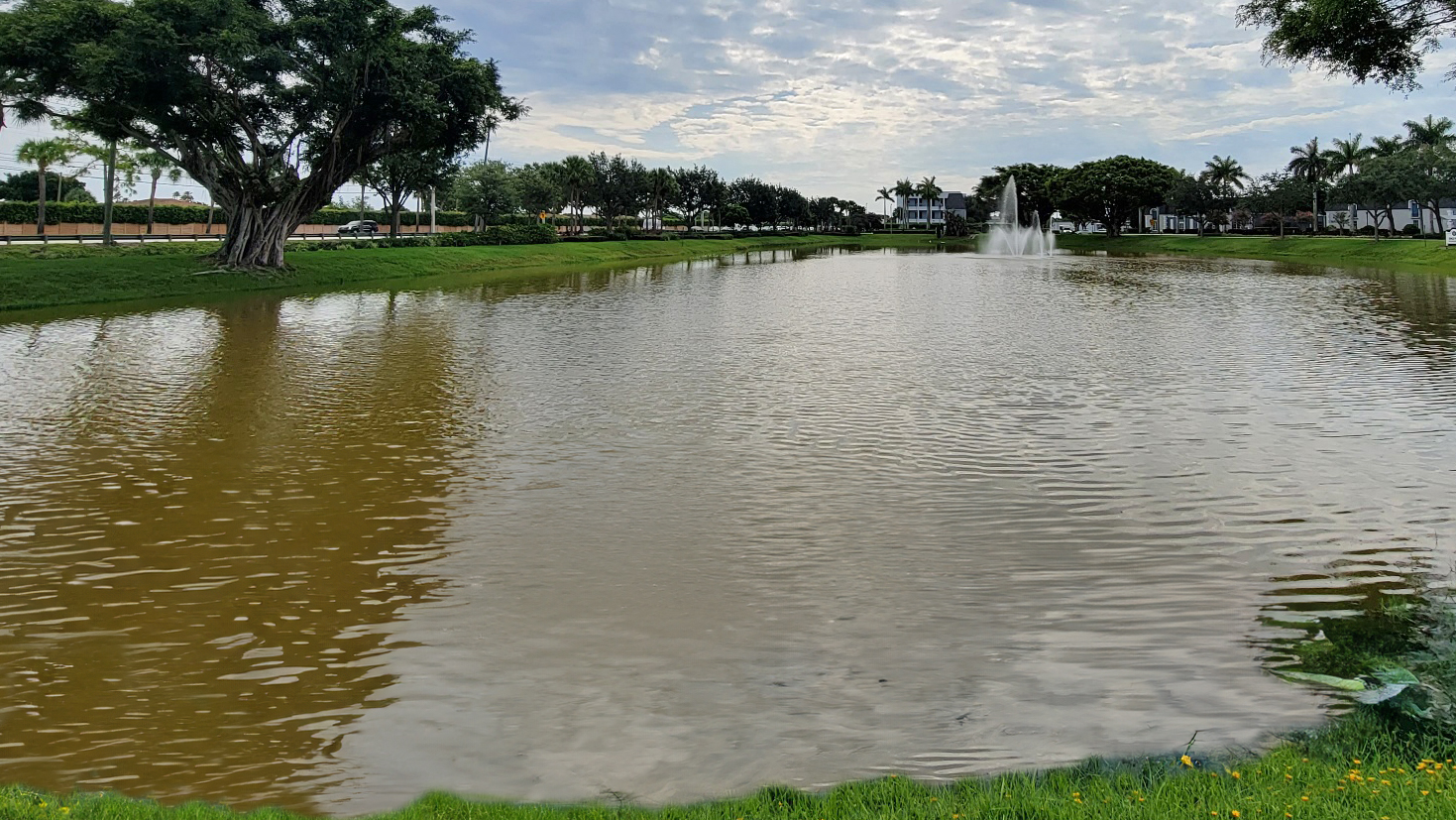
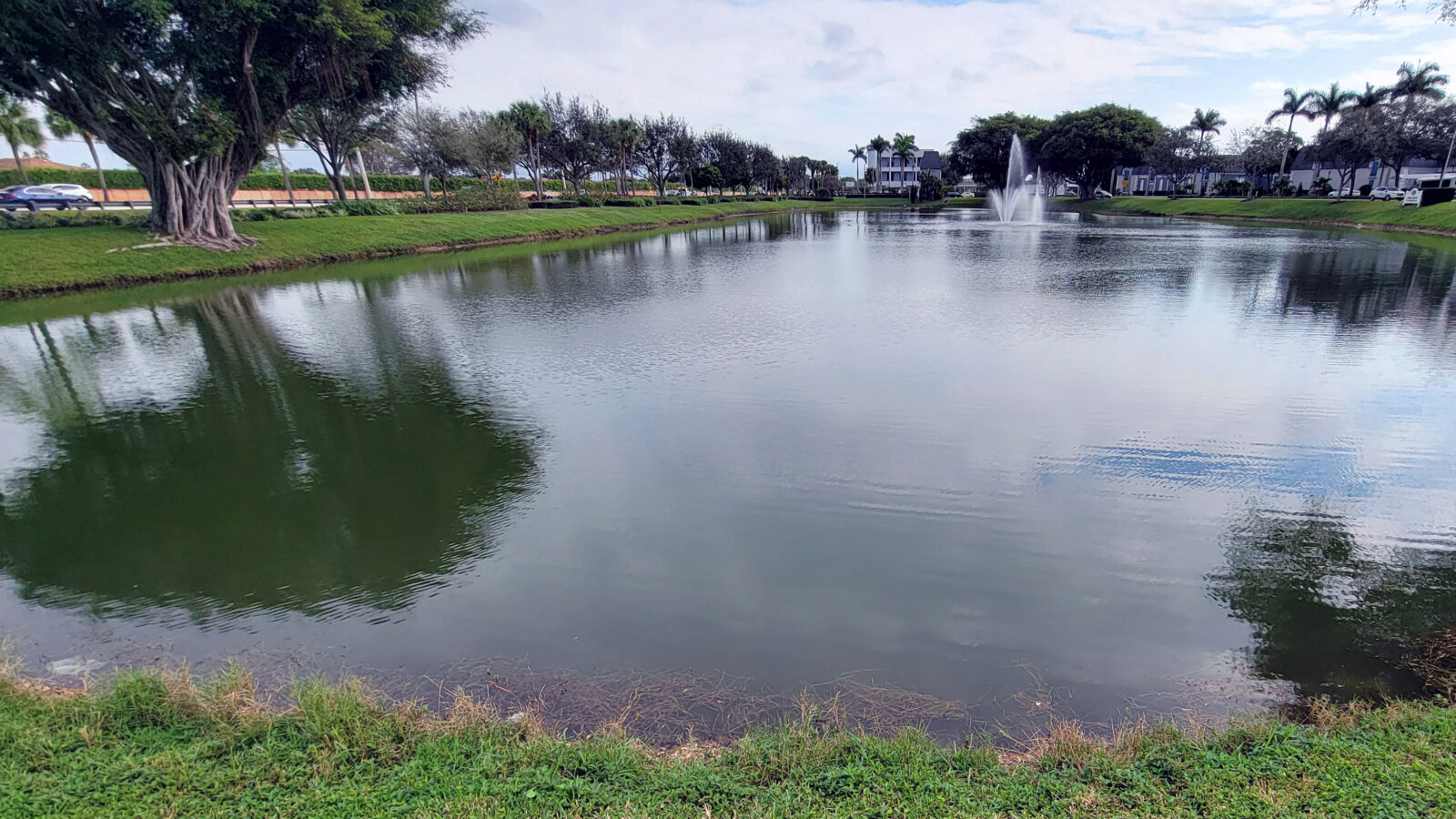
Implement Sustainable Solutions for Optimal Results
Vegetative buffers extending 3-5 feet around the shoreline of a lake or pond can be extremely effective at capturing and diluting nutrient-rich stormwater runoff before it reaches the waterbody. Your lake management professional can recommend appropriate buffer species that are native to your region. Finally, if erosion and sedimentation have become recurring issues on your property, shoreline restoration may be necessary. Bioengineered living shorelines provide a lasting mesh barrier that integrates seamlessly into the shoreline—and the process can be paired with hydro-raking to remove muck and debris from the bottom of the waterbody, increasing overall depth and volume.
Conduct Recurring Water Quality Tests
If you have already implemented these strategies in your private pond or community waterbody, it may already be on the road to success. However, it’s not always clear when a sudden spike in nutrients may occur. To ensure your waterbody continues meeting your goals, it’s important to complete professional water quality assessments on a recurring basis. Over time, water samples can reveal trends in water quality data, as well as potential nutrient loading problems before they get out of hand. With a close eye and a little professional insight, you can keep your waterbody on track to meet your needs for years to come.
SOLitude Lake Management is a nationwide environmental firm committed to providing sustainable solutions that improve water quality, enhance beauty, preserve natural resources and reduce our environmental footprint. SOLitude’s team of aquatic resource management professionals specializes in the development and execution of customized lake, pond, wetland and fisheries management programs that include water quality testing and restoration, nutrient remediation, algae and aquatic weed control, installation and maintenance of fountains and aeration systems, bathymetry, mechanical harvesting and hydro-raking, lake vegetation studies, biological assessments, habitat evaluations, and invasive species management. Services and educational resources are available to clients nationwide, including homeowners associations, multi-family and apartment communities, golf courses, commercial developments, ranches, private landowners, reservoirs, recreational and public lakes, municipalities, drinking water authorities, parks, and state and federal agencies. SOLitude Lake Management is a proud member of the Rentokil Steritech family of companies in North America.








